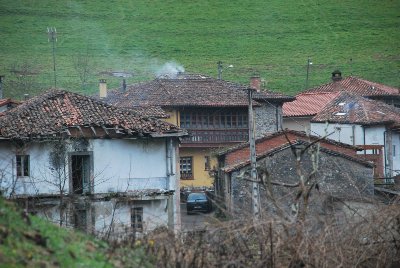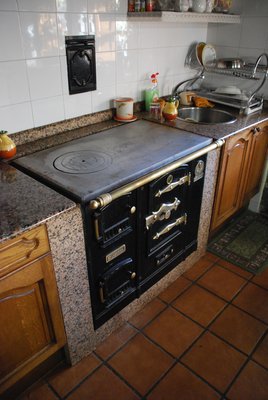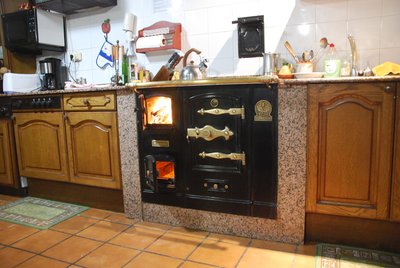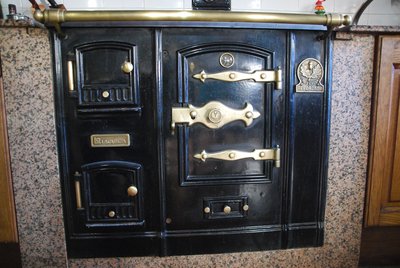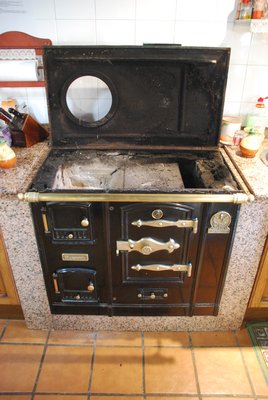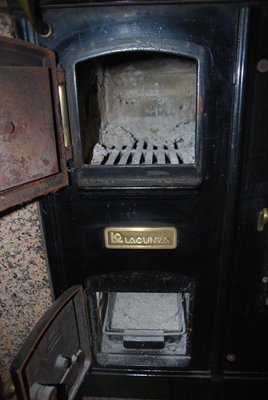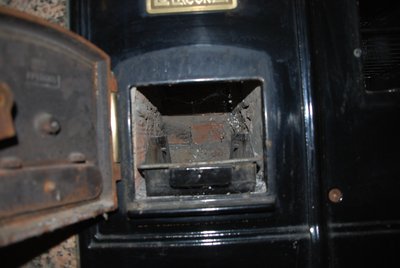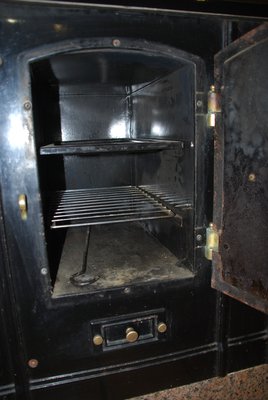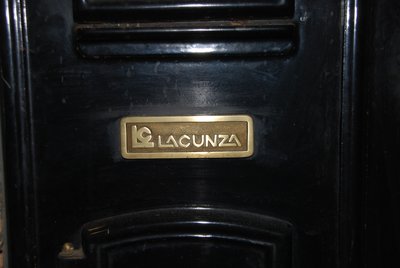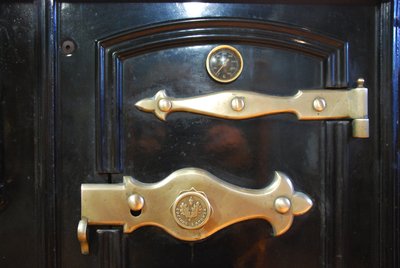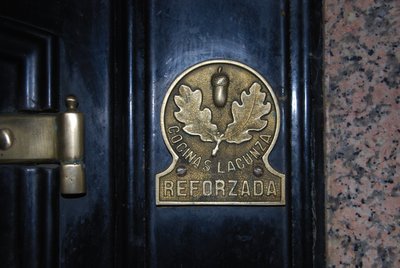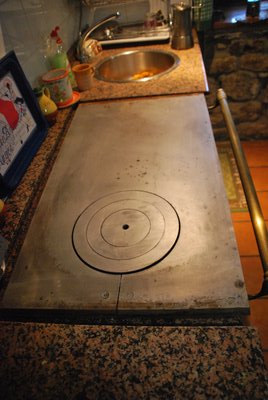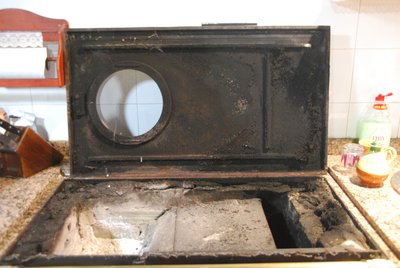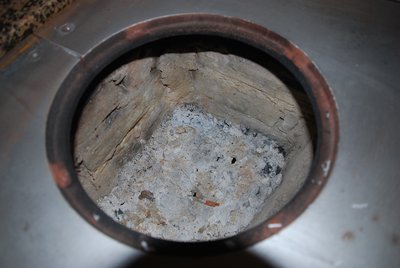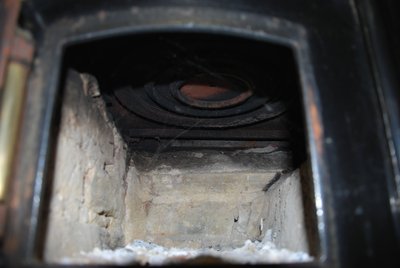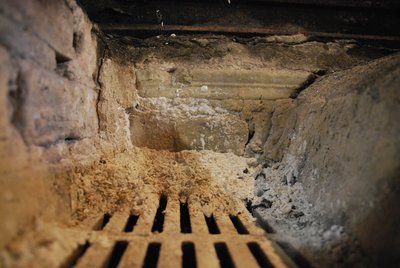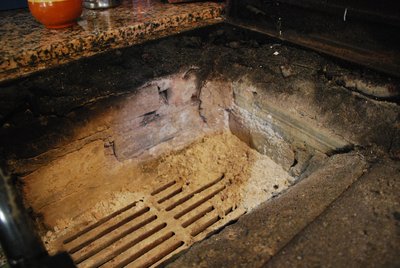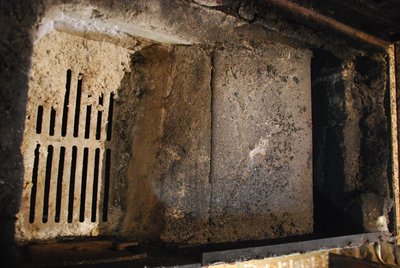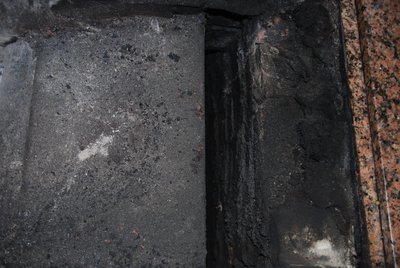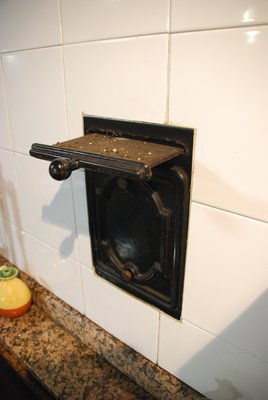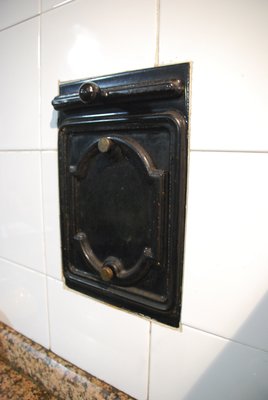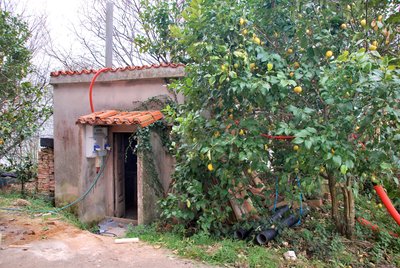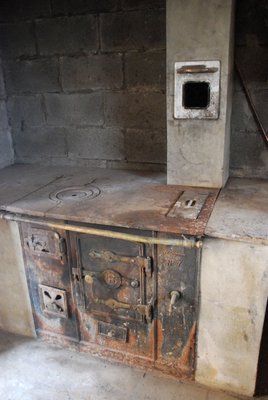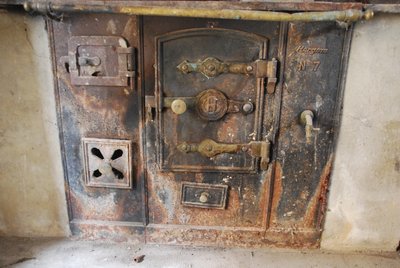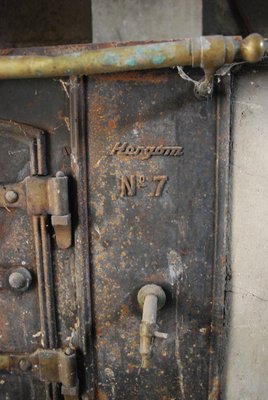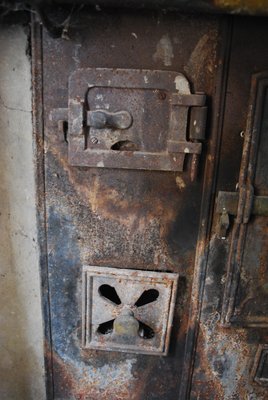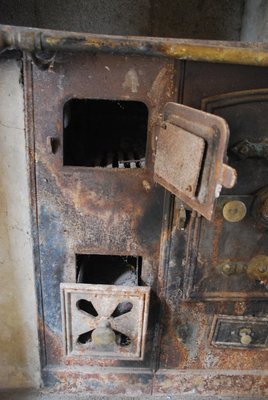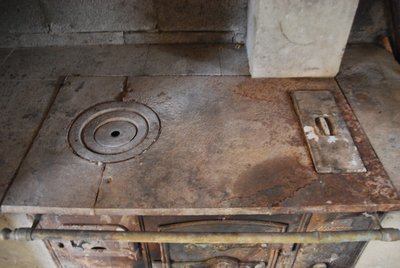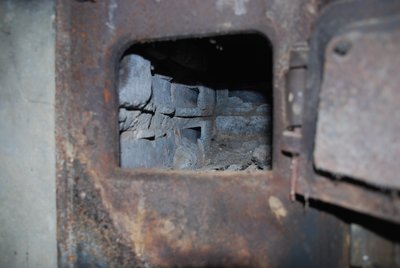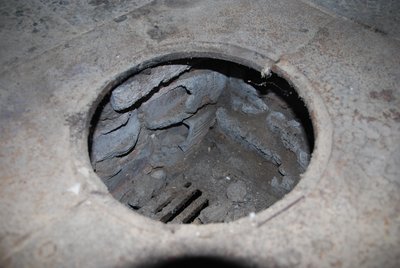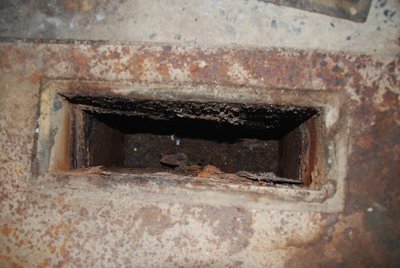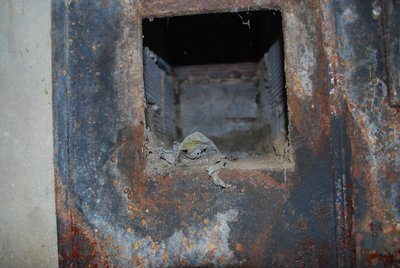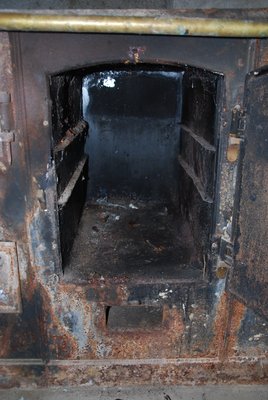Cocina Economica
These images and text detail two cookstoves in the hamlet of Debodes, Asturias
This style of cookstove can be found throughout Northern Spain and and provides an economical way to heat and cook with a renewable locally available fuel source.
Though having become less popular during temporary times of abundance, the recent financial adjustments of the Mediterranean countries within the EEC have again made the cosina economica a viable alternative to gas and electric cookstoves.
Though having become less popular during temporary times of abundance, the recent financial adjustments of the Mediterranean countries within the EEC have again made the cosina economica a viable alternative to gas and electric cookstoves.
The hardware consists of the steel panel that forms the front facing of the stove on to which the doors are attached, the cast iron cook-top, damper mechanism, and grate. These components can be bought in most rural hardware shops for approx. € 1,000.
The fire, box and smoke path of the stove are built in masonry and the metal components then attached to tie rods layed in the masonry.
The stoves are usually located against an outside wall, and served by a chimney built within the wall. Typically masonry walls are 1 meter thick and uninsulated.
I was told of, though have never seen, a variant common to Galisia where the stove is free standing and connected to a remote chimney in an outside wall, by a horizontal transmission tunnel of 1 to 2 meters long. The occupants sit and eat around the stove.
I was told of, though have never seen, a variant common to Galisia where the stove is free standing and connected to a remote chimney in an outside wall, by a horizontal transmission tunnel of 1 to 2 meters long. The occupants sit and eat around the stove.
The cast iron cook top can be raised to allow cleaning. The smoke path runs from the fire box at left, over the oven and down the right side of the oven , underneath the oven, and into the chimney.
The cast iron cook top with control joint from the opening for the hot plate to the outer rim. The joint is bolted together with a steel plate on the underside of the cook top.
The fire box built from common clay brick layed in clay mortar. The top of the wall at right is in site made refractory concrete and rounded to allow smooth flow over the oven.
The damper in the closed position. The rectangular plate below the handle is removable and allows cleaning of the chimney flue without climbing on to the roof. It also gives direct access to the damper frame should it need cleaning.
The second cookstove is located on a mountain top in a relatively modern out building of a ruined farm house.
The stove was used by a shepherd when he lived and slept with his flock.
A manually operated water tank to the right of the down channel would provide limited amounts of pre-heated water.
A manually operated water tank to the right of the down channel would provide limited amounts of pre-heated water.
Fabricated by Cocinas Hargom and marked No. 7 presumably indicates that it was one of several optional variants.
The tap at the base of the water tank, high enough up the face of the stove to allow a bowl to be placed beneath.
The fire box and ash box doors. The fire box has a hinged door with an air intake that allows air to flow between the door and the heat shield on the back of the door.
The ash box door is actually a steel plate with an adjustable air intake welded to the front face of the tin ash tray.
The ash box door is actually a steel plate with an adjustable air intake welded to the front face of the tin ash tray.
The entire masonry interior of the stove including the fire box is of a particular kind of hollow burnt clay block common in Western Europe but unknown in North America. This is obviously not the ideal material and is probably employed for reasons of economy and availability.
The oven, and under oven channel access opening. The interior of the oven is heavily coated with soot and creosote indicating that it had rusted through to the smoke path well before the stove was abandoned.
From these limited observations it seems that no effort is made to encourage thermal retention in the masonry elements of the stoves. This will though, depend entirely on the knowledge and motivation of the individual builder.
Marcus Flynn
2012
